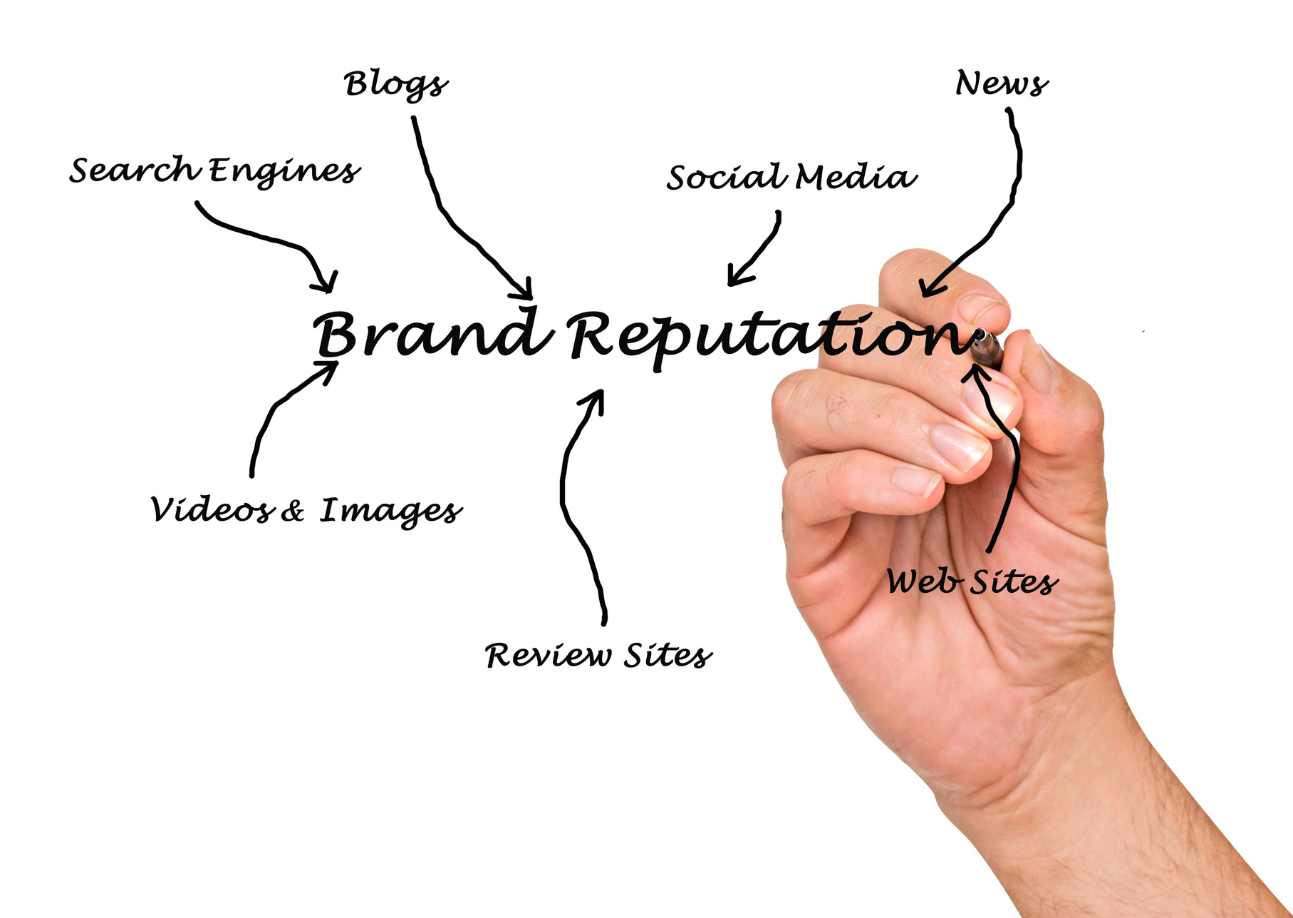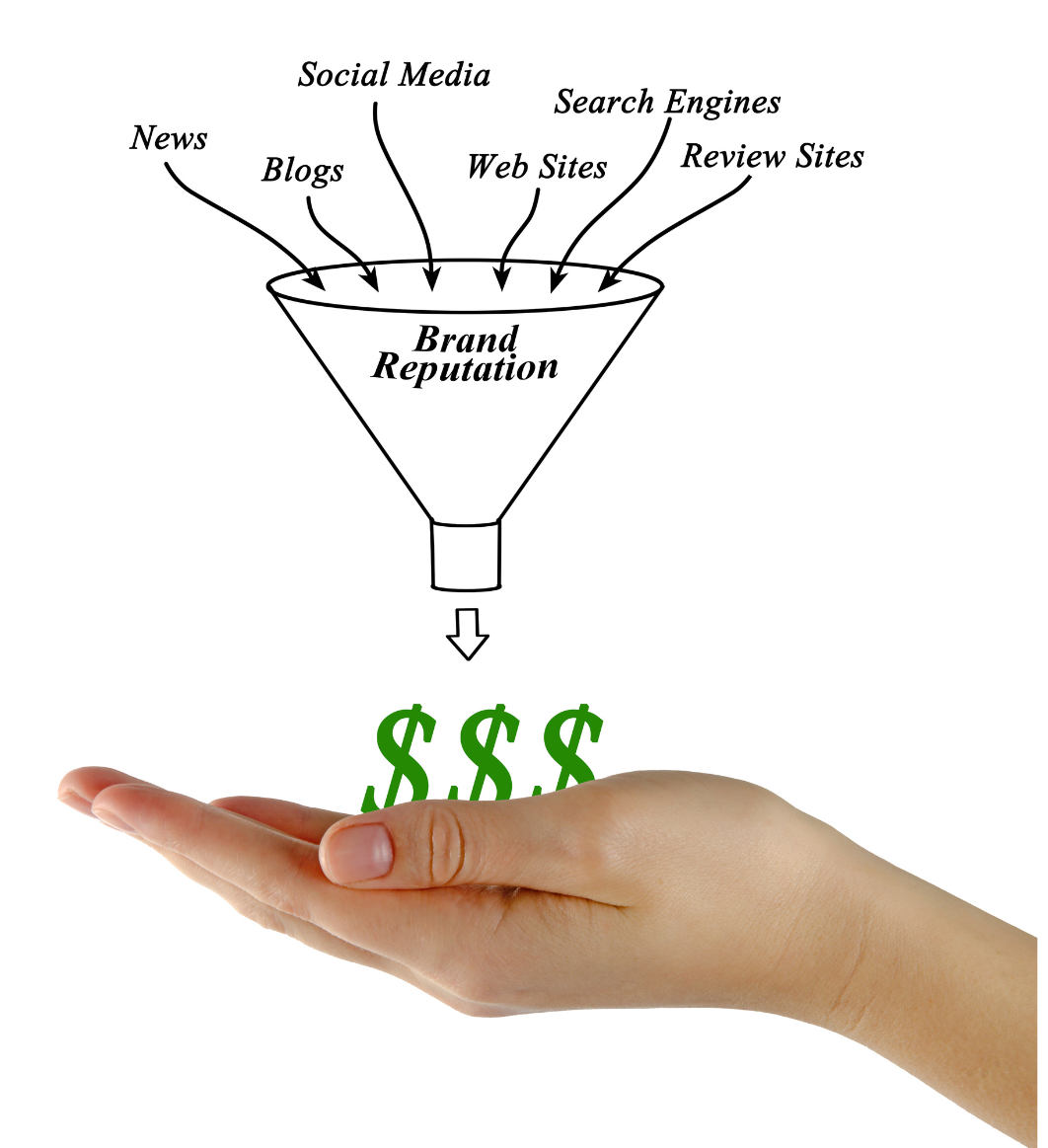Nurturing Brand Excellence in the Digital Age: The Art of Reputation Management
In the digital era, where information travels at the speed of light and opinions are broadcast to a global audience with a single click, brand reputation management has ascended to the zenith of business priorities. Let’s delve deep into the profound significance of brand reputation and unveil strategies that enable brands to construct and safeguard a sterling reputation in the digital realm.

Significance of Brand Reputation Management
In today’s interconnected world, brand reputation management has transcended being merely important; it is an imperative for businesses. Here’s why:
- Customer Perception and Loyalty:a. Building Trust: A brand’s reputation is synonymous with trust. A positive brand reputation fosters trust among consumers. When customers trust a brand, they are more likely to engage with it, buy its products, and remain loyal over the long term.
b. Influence on Purchasing Decisions: Consumers often rely on a brand’s reputation when making purchasing decisions. A brand with a positive reputation can sway potential customers in its favor, resulting in increased sales and market share.
c. Mitigating Negative Impact: Conversely, a tarnished reputation can be a brand’s downfall. Negative perceptions can deter potential customers, causing sales to plummet and customer loyalty to wane.
More About the Significance of Brand Reputation Management
In the modern, interconnected world, brand reputation management has assumed a role that transcends mere importance—it is an absolute imperative for businesses across industries and scales. The reasons for this imperative are multifaceted and deeply rooted in the fundamental dynamics of consumer behavior and market competitiveness. Let’s delve into these critical aspects:
1. Customer Perception and Loyalty:
a. Building Trust:
Trust is the bedrock upon which successful brands are built. A brand’s reputation is synonymous with the trust it garners from its customers. Trust, in this context, is not merely a sentiment; it’s a currency that drives customer loyalty and influences their purchasing decisions.
- Consistency and Reliability: A positive brand reputation signifies that the brand consistently delivers on its promises. Whether it’s product quality, customer service, or ethical practices, a reputable brand is one that customers can rely on.
- Emotional Connection: Trust extends beyond the functional aspects of a product or service. A positive brand reputation also engenders an emotional connection between the brand and its customers. This emotional bond can lead to long-term loyalty and advocacy.
b. Influence on Purchasing Decisions:
Consumer purchasing decisions are profoundly influenced by a brand’s reputation. When customers perceive a brand as trustworthy, reliable, and aligned with their values, they are more likely to choose that brand over competitors. The power of reputation in driving sales cannot be overstated.
- Positive Associations: A positive brand reputation fosters positive associations in consumers’ minds. These associations can significantly impact their preferences and decisions. Customers may be willing to pay a premium for a product or service from a brand with a strong reputation.
- Word-of-Mouth Recommendations: Satisfied customers who trust a brand are more likely to recommend it to others. Word-of-mouth marketing, amplified through social media and online reviews, can lead to organic growth and an expanded customer base.
c. Mitigating Negative Impact:
A brand’s reputation is its shield against adversity. A tarnished reputation, conversely, can spell doom for even the most robust businesses. Negative perceptions, whether stemming from product recalls, ethical controversies, or poor customer experiences, can have cascading effects.
- Impact on Sales: A negative reputation can lead to a decline in sales as potential customers are dissuaded from engaging with the brand. It can also result in a loss of market share as consumers gravitate toward brands they trust.
- Erosion of Customer Loyalty: Loyal customers may abandon a brand that experiences a reputation crisis. Loyalty is fragile, and the erosion of trust can lead to customer attrition, which can be challenging and costly to reverse.
- Long-Term Damage: The effects of a tarnished reputation can linger long after the initial crisis. Rebuilding trust and rehabilitating a brand’s reputation often requires significant time, resources, and concerted efforts.
In conclusion, brand reputation management is not merely a marketing buzzword; it’s a strategic imperative. It underpins the very essence of a brand’s relationship with its customers and its position in the market. A positive reputation fosters trust, influences purchasing decisions, and acts as a bulwark against adversity. In an age where information flows freely and consumer voices resonate loudly, investing in brand reputation management is not optional; it’s an essential strategy for enduring success and resilience in the marketplace.

Strategies for Building and Maintaining a Positive Brand Reputation Online
Building and maintaining a positive brand reputation in the digital realm is a multifaceted endeavor. Successful brand reputation management relies on a repertoire of strategies that encompass the following:
- Monitoring Online Mentions and Reviews:a. Real-Time Vigilance: In the digital age, brand reputations can be made or marred in an instant. Monitoring online mentions, reviews, and conversations about your brand is crucial. It enables you to identify both positive and negative sentiments surrounding your brand.
b. Proactive Mitigation: Negative feedback, if left unattended, can snowball into a major crisis. Promptly addressing and rectifying customer concerns demonstrates your commitment to customer satisfaction. It also showcases your brand’s responsiveness and willingness to improve.
c. Learning and Adapting: Monitoring online chatter isn’t just about damage control. It’s also a valuable source of insights. By understanding what customers appreciate and where improvements are needed, you can adapt your strategies to align better with customer expectations.
- Engaging with Customers Through Social Media:a. Active Presence: Social media is the epicenter of modern communication. An active presence on platforms like Facebook, Twitter, Instagram, and LinkedIn allows you to engage with your audience in real-time.
b. Connecting with Values: Beyond promotional content, social media is a medium to connect with customers on a deeper level. Sharing your brand’s values, supporting social causes, and expressing your commitment to ethical practices can resonate with your audience.
c. Addressing Concerns: Social media platforms also serve as a direct line of communication with your customer base. Responding promptly to queries, comments, and concerns demonstrates your brand’s dedication to customer care and transparency.
- Addressing and Resolving Customer Service Issues Promptly:a. Turning Negatives into Positives: Customer service issues are inevitable, but how you handle them can define your brand. Swiftly addressing and resolving problems can transform a negative customer experience into a positive one. It showcases your commitment to customer satisfaction.
b. Proactive Problem-Solving: Rather than waiting for complaints, proactive problem-solving can prevent issues from arising in the first place. By analyzing common pain points and taking corrective actions, you can create a smoother customer experience.
c. Feedback Loops: Establishing feedback mechanisms allows you to continuously improve. Encourage customers to share their experiences and suggestions. Their feedback can be an invaluable resource for refining your products, services, and customer interactions.
In the digital age, brand reputation is a currency more valuable than gold. It is the beacon that guides customer loyalty and purchasing decisions. With vigilant monitoring, active engagement on social media, and a steadfast commitment to addressing customer service issues, brands can navigate the treacherous waters of the digital landscape while fostering trust and building a reputation that stands the test of time. In this era of instantaneous communication, brand reputation management isn’t just a strategy; it’s the lifeline of enduring success.

